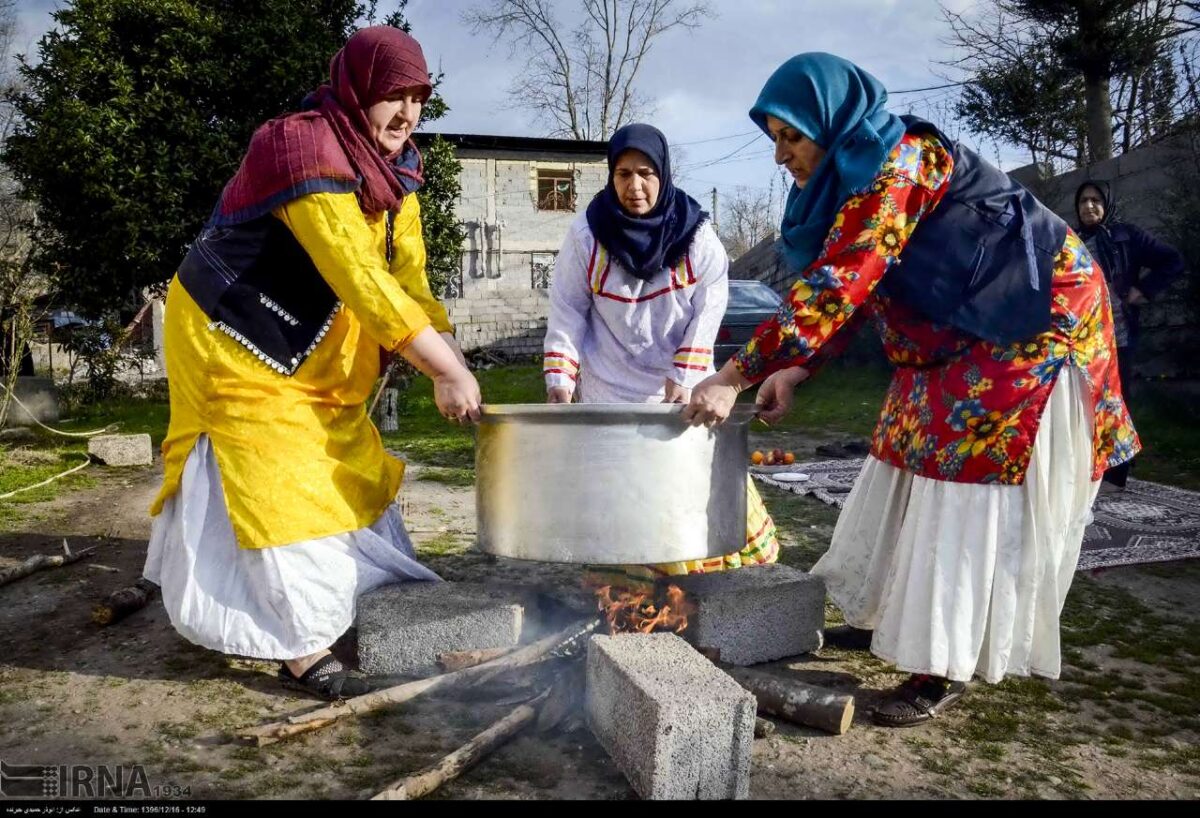Cooking samanu is one of the oldest traditions still maintained in many parts of Iran ahead of Nowruz (Iranian New Year).
Traditional samanu is made entirely of germinated wheat and water (no other ingredients). Nowadays, it is common to add a bit of flour to speed up the thickening process, although this makes the paste taste somewhat bitter and less sweet.
What follows are IRNA’s photos of samanu making in Estalkhjan village in Gilan province.
Located 20km away from Roudbar County, Estalkhjan village is one of the main tourist attractions of Gilan province.
Samanu is still cooked in the village about one week before Nowruz.
